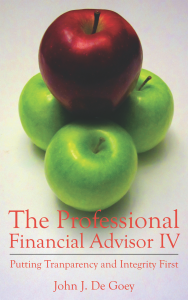The importance of asset allocation
Only two out of four elements are important when designing a portfolio. But most advisors and investors tend to focus on the wrong ones
Advertisement
Only two out of four elements are important when designing a portfolio. But most advisors and investors tend to focus on the wrong ones
 One of the most quoted (and misunderstood) papers in the history of finance was one written by three researchers led by Gary Brinson. The research looked into the performance of a multitude of American corporate pension plans and showed that investment policy—the strategic mix of stocks, bonds, and cash—explains over 90% of a portfolio’s variance (or risk).
Another interesting bit from the Brinson research showed that pension plans lost an average of 0.66% in returns as a result of market-timing activities. The research further showed that an additional 0.36% was lost as a result of security selection (i.e., stock picking). Would it surprise you to learn that many financial advisors suggest they “add value” with their superior abilities as market timers and/or stock pickers even though such positive outcomes are unlikely?
One of the most quoted (and misunderstood) papers in the history of finance was one written by three researchers led by Gary Brinson. The research looked into the performance of a multitude of American corporate pension plans and showed that investment policy—the strategic mix of stocks, bonds, and cash—explains over 90% of a portfolio’s variance (or risk).
Another interesting bit from the Brinson research showed that pension plans lost an average of 0.66% in returns as a result of market-timing activities. The research further showed that an additional 0.36% was lost as a result of security selection (i.e., stock picking). Would it surprise you to learn that many financial advisors suggest they “add value” with their superior abilities as market timers and/or stock pickers even though such positive outcomes are unlikely?
Share this article Share on Facebook Share on Twitter Share on Linkedin Share on Reddit Share on Email